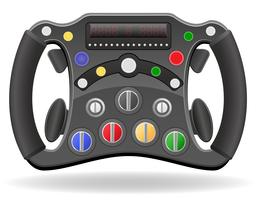

Just like a real DOT exam, it’s based on the latest official Wyoming Rules of the Road and features the same question format and scoring system as those used by DOT authorities. Here’s our 2nd WY permit practice test available online any time of day or night.
#COWBOY STEERING WHEEL DRIVERS LICENSE#
Get a driving license and grab the steering wheel of your private vehicle – and in case you need some practice for your DOT Permit Test, check out what we brought to you.
#COWBOY STEERING WHEEL DRIVERS DRIVERS#
Goode when he sings, the engineers would see him sitting in the shade Strumming with the rhythm that the drivers made.Ĭopyright 2020 CADENAS - Privacy - Terms of Service - Contact - Cookie Settings - Legal notice.īy clicking on Accept only required cookies you decline this.įurther information on the use of cookies can be found in our data protection declaration.The fact that you live in the Cowboy State doesn’t mean you have to be wearing spurs and riding horses. The largest number of coupled driving wheels was 14 (seven axles) on the ill-fated AA20 4-14-4 locomotive. The largest number of total driving wheels was 24 (twelve axles) on the 2-8-8-8-2 and 2-8-8-8-4 locomotives. Some early locomotives had as few as two driving wheels (one axle). The suffix o is used to indicate independently powered axles. This is because improvements in valve design allowed for higher piston speeds. These were driving wheels without the usual flanges, which allowed them to negotiate tighter curves without binding. Some long wheelbase locomotives (four or more coupled axles) were equipped with blind drivers. Since a conventional steam locomotive is directly driven, one of the few ways to gear a locomotive for a particular performance goal is to size the driving wheels appropriately.įreight locomotives generally had driving wheels between 40 and 60 inches (1,016 and 1,524 mm) in diameter dual-purpose locomotives generally between 60 and 70 inches (1,524 and 1,778 mm), and passenger locomotives between 70 and 100 inches (1,778 and 2,540 mm) or so. Swiss Crocodile locomotive 7 ) but their use is now confined to shunting locomotives. Jackshaft drive and coupling rods were used in the past 5 6 (e.g. Swiss Crocodile locomotive) but their use is now confined to shunting locomotives. Jackshaft drive and coupling rods were used in the past (e.g. On a conventional, non-articulated locomotive, the driving wheels are all coupled together with side rods (also known as coupling rods) normally one pair is directly driven by the main rod (or connecting rod) which is connected to the end of the piston rod power is transmitted to the others through the side rods.On diesel and electric locomotives, the driving wheels may be directly driven by the traction motors.Ĭoupling rods are not usually used, and it is quite common for each axle to have its own motor. The fact is that the mounting lugs are what react all of the forces moments from braking (forgetting about clamp load) and stop the caliper from just rotating round with the brake disc whether itll fail or not I dont know, but adding a big stress raiser in to an area that has been designed to have a nice large fillet radius is just asking for trouble. If you want to be a pedant then by all means keep arguing about where the most stressed part of a caliper is, but I wont listen to you as its a pointless diversion.


 0 kommentar(er)
0 kommentar(er)
